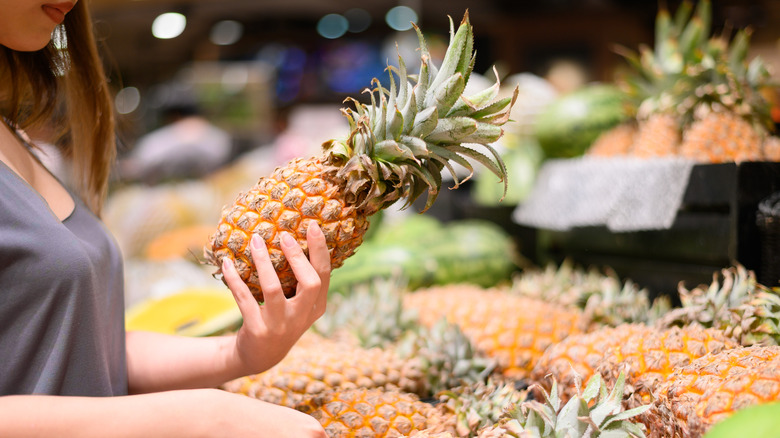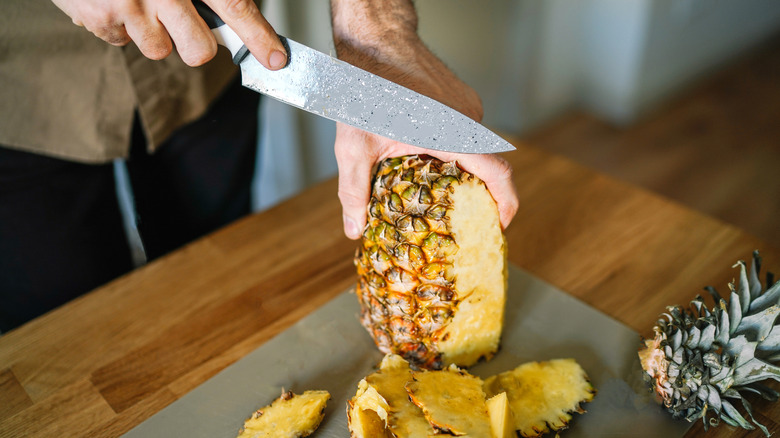How To Tell If Pineapple Is Ripe Before Cutting It Open
Knowing how to choose a ripe pineapple before cutting it open can save you from disappointment. A perfectly ripe pineapple is a crowd-pleasing treat: tart, tangy, mouth-tinglingly sweet, and simply unlike any other fruit. If not just ripe enough, a pineapple can be hard and flavorless or mushy, sour, and fermented. So, how can you tell?
A ripe pineapple will have some yellow or golden tones near the base, sometimes blending into light brown. Avoid ones that are entirely green (underripe) or excessively brown (overripe). Check the texture by giving it a gentle squeeze, similar to how you would check if a mango is ripe. A ripe pineapple feels firm with a slight give, while an underripe one is rock-hard and an overripe one feels too soft or squishy.
You can also give it a sniff. No scent at all usually means underripe, while a sour or vinegary smell means it's most likely overripe. It's kind of a no-brainer, but if the pineapple has a pleasantly sweet, fruity scent to it, that's a good sign.
Don't forget the leaf test! If any one of the leaves on top of the pineapple is easily removed, you've got a ripe pineapple. If it's difficult to pull out, the fruit is likely not ripe enough. Once you've picked the perfect pineapple, it's time to tackle the next challenge: How to cut a pineapple. Whether slicing it for snacks or cubing it for a tropical dish, a ripe pineapple is always worth the effort.
What to do with under or overripe pineapple
What if your pineapple isn't quite ready — or worse, it's overripe? Don't panic! First, know that unlike some fruits like banana or avocado, pineapples are not likely to continue to ripen after you bring them home. Inside your kitchen, they're not going to spontaneously ripen, so if you've already purchased an unfortunately underripe pineapple, you'll have to make do. With underripe pineapples, you can sprinkle sugar or honey on them and toss them on the grill or under the roaster to bring out their natural sweetness. Or, you can pop them into a blender for smoothies or muddle them up and add sweetener to make a tart pineapple margarita with sea salt for a smoky twist.
Likewise, an overripe pineapple can still be used if it's not spoiled. Avoid eating mushy or fermented parts, but the rest is perfect for blending into smoothies, cooking into sauces, or even making a tangy pineapple syrup for desserts or cocktails.
But what if it's gone bad? Look for signs like strong fermentation smells, excessive mold, or slimy textures. If only part of the pineapple looks slightly brown, you can cut away the bad section and use the rest immediately. If it's too far gone, compost it instead of tossing it in the trash to reduce waste. With these tips, every pineapple can find its purpose in your kitchen!

